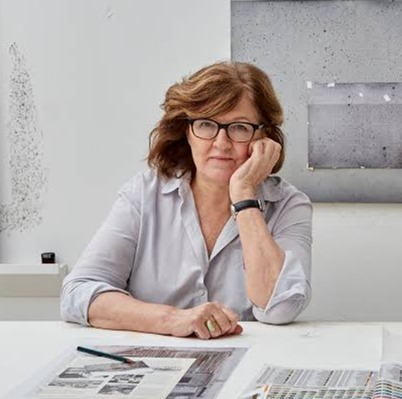
Vija Celmins
Vija Celmins is one of the most significant Latvian-American artists, known for her photo-realistic paintings and drawings of natural environments. Her fascination with phenomena like the ocean, spider webs, star fields, cloudy skies, and rocks led her to dedicate her life and career to unconventionally depicting these wonders.
Biography of Vija Celmins
Vija Celmins was born in 1938 in Riga, Latvia's capital. During the years preceding the Second World War, Celmins fled to Germany with her parents, where the young girl and her family struggled to survive under the refugee-despising regime. They resided in a United Nations refugee camp in Esslingen am Neckar, Baden-Württemberg, until the end of the war.
In 1948, the Church World Service relocated the family to the United States, initially to New York City, then to Indianapolis. At the age of ten, Celmins found herself in a foreign country, knowing only a few words of English. Turning to drawing as an escape from reality, she eventually pursued painting, attending classes at the prestigious John Herron School of Art in Indianapolis, where she blossomed as a painter.
During her college years, Celmins began exploring the works of the Italian monotone still-life painter Giorgio Morandi, which led her toward controlled abstraction. After earning her BFA in 1962, she moved to Venice, Los Angeles, where she resided for the next twenty years, devoting most of her time to painting or sculpting.
Based in New York City, Celmins became renowned in artistic circles for her ability to create drawings with such fine detail that they appear to be actual old-school photographs rather than elaborate copies. With over sixty years of activity, examining Vija Celmins' career as a whole presents a new awe-inspiring challenge. She was involved in numerous fields and mediums, creating countless pieces and remaining a crucial figure in artistic circles for decades.
Vija Celmins' Art Style
During the 1960s in California, Vija Celmins' early artistic endeavors began to coalesce into a remarkable photorealistic painting style. Initially, she meticulously rendered ordinary objects like televisions, lamps, pencils, and erasers. However, she eventually transitioned to creating monochromatic reproductions of photographs. During this phase of her career, Celmins predominantly delved into war-related themes, portraying images of conflict such as handguns and warplanes.
During the late 1960s through the 1970s, Vija Celmins transitioned from traditional painting to exclusively focusing on graphite pencil art. She specialized in creating intricate photorealistic drawings based on photographs of natural subjects, such as the moon's surface, sky, ocean, the insides of shells, and close-ups of rocks. As the 1970s progressed, Celmins increased her focus on sculpting, producing multiple series of bronze cast and acrylic-painted stones. By 1981, she completely transitioned from using pencils to primarily painting, while also creating a significant number of prints.
Years:
Born in 1938
Country:
Latvia, Riga
Gallery: